Boardroom Seating Table Sizes – How Many Seats Will Fit?
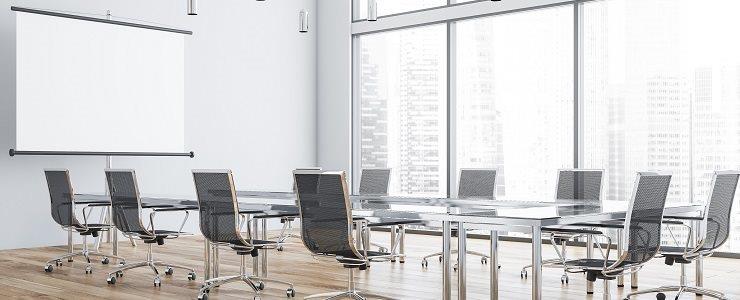
How big should my boardroom table be to seat the number of people I need?
Different sized boardroom tables accommodate different numbers of seats (this seems obvious!). But different shapes of boardroom seating can accommodate different numbers of chairs.
How many seats will fit around my boardroom or meeting table?
There are several boardroom seating and conference table shapes on the market (rectangular, oval, D-end, circular, and boat-shaped board tables, to name a few) and each shape will best accommodate an optimum number of seats.
What sized boardroom seating can I fit into my room?
Your room dimensions may also determine which size and shape of boardroom table will be the best fit for you. (Further information and room size guide below).
We have created a helpful visual guide (below) to help you see the most common office meeting table or board table shapes and sizes choose according to the number of recommended seating positions for each shaped table.
BOARDROOM TABLE SHAPE, SIZE, & SEAT CAPACITY GUIDE
NB. This is only a guide: - other variables may include:
1 - The widths of the chairs you use.
2 – How close or spaced apart you choose to have chair next to chair.
3 – Which type of table legs you choose – some board table legs impede some chair positions.
(See below for further information.)
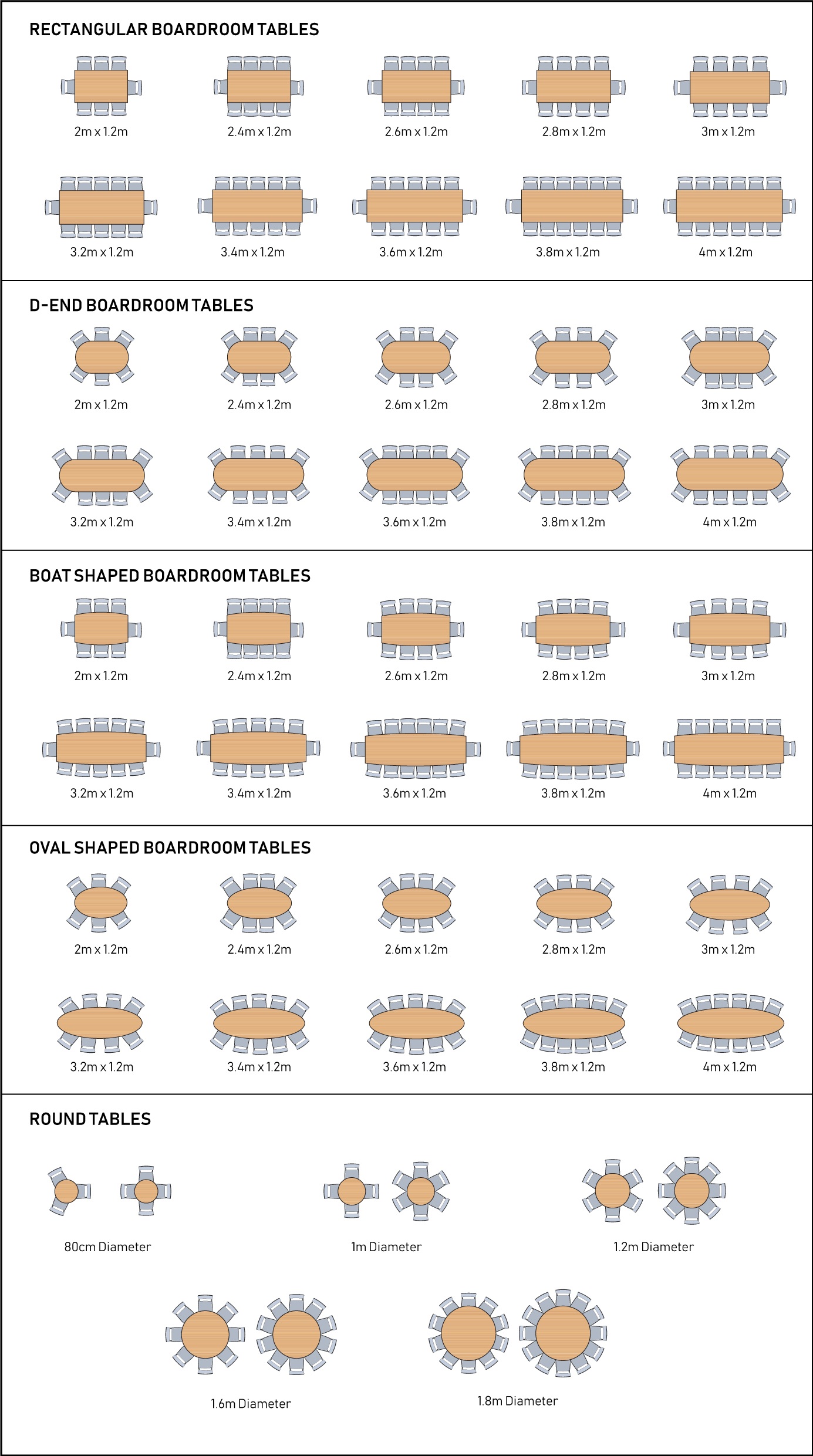
Make Sure You Also Consider The Following..
1) Check Your Chair Sizes:
Bear in mind that the overall width of the chairs you use with your boardroom table will determine how many chairs you can comfortably fit around and pushed under the table. Most boardroom chairs would have a width of 50-55cm, however some may be wider, exceeding 60cm, depending on the style of chair, whether it has arms or not, and what the leg design is.
2) How Close Together Or Spaced Apart Do You Want Your Chairs:
You should consider how close you want your users sit – tight together with chairs almost touching each other or with some space either side allowing the user to move around more freely at the table. If you are happy for everyone to sit very close together then you may be able to fit more chairs around your table. So selecting the right sized meeting chairs to fit your table will be an important factor in choosing the best size and style of boardroom table for your room.
3) Table Leg Styles Can Impact Where Chairs Can Be Positioned:
Significant mainly for smaller sized meeting tables, the leg design might impede on certain users being able to tuck themselves and their chair under the table due to a leg being positioned where they would otherwise sit. For tables with well inset legs this shouldn’t pose a problem, but for smaller tables where the legs are more obvious, you should consider whether any of your chairs will hit the legs.
For example, boardroom seating with arrowhead base legs will restrict access around the legs if you are wanting to push chairs under the table, while the trumpet base legs will allow freer room for leg movement under the table.
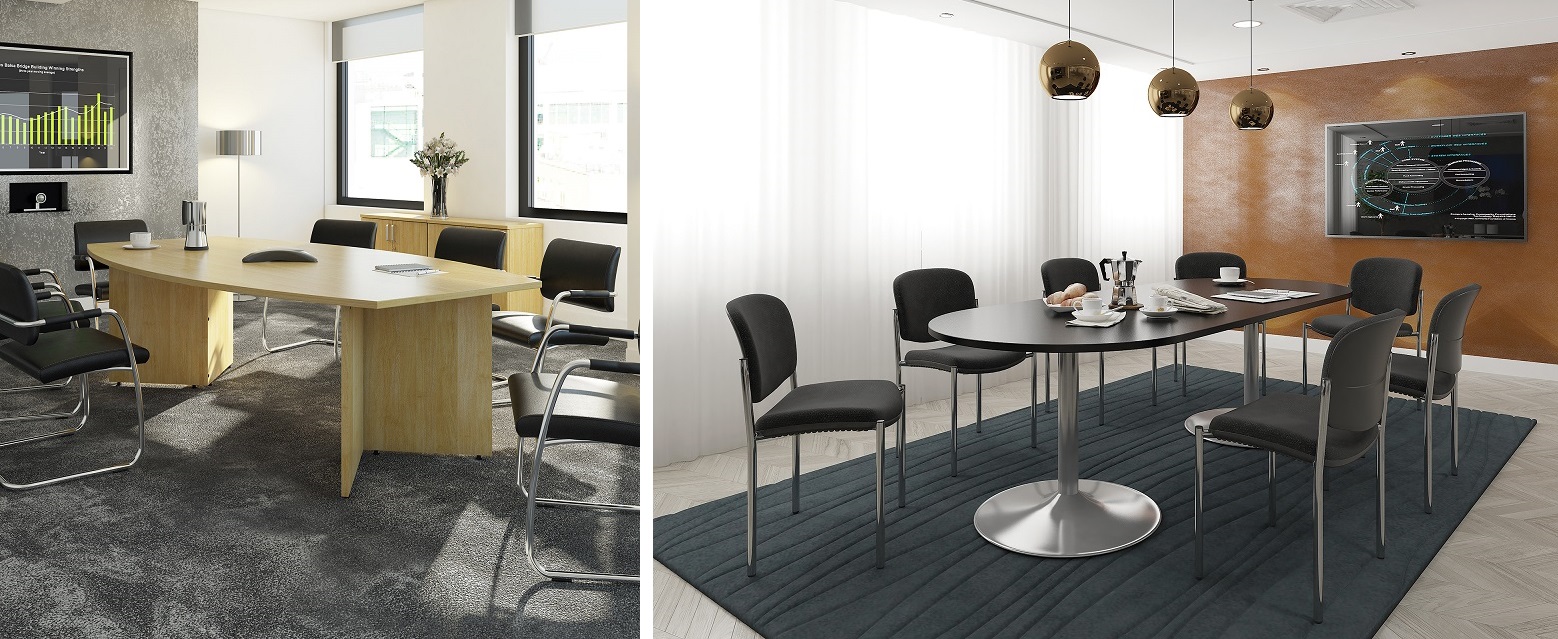
RULE OF THUMB CHAIR SPACING GUIDE:
(Dependant on: Overall Chair Width + How Much Or Little Space Required Between Each Chair)
As an overall rule of thumb, we recommend allowing 70cm per user along the straight edge of a boardroom table, which allows 50-55cm for the chair width, and a few centimetres gap either side of the chair.
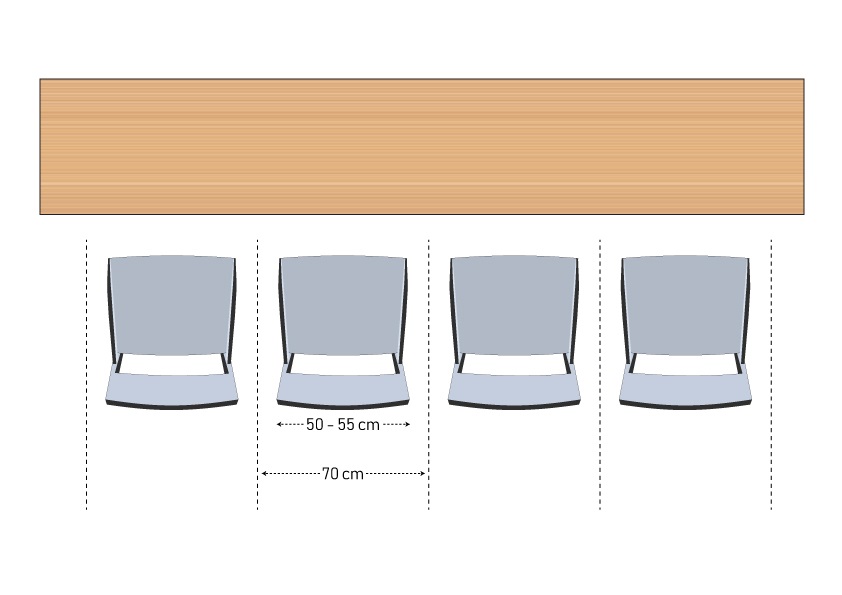
WHAT SIZE & SHAPE OF BOARDROOM TABLE WILL FIT INTO MY ROOM?
According to British Standard fire regulations (BS5588), the minimum space between desks should be 60 cm, and 90cm for wheelchair users. For practical reasons however, a minimum of 100cm is a good minimum guide. For boardroom tables we would recommend a minimum 1200mm walkway around each side of the table, so that with chairs pushed under the table, users can still walk around the table.
See our room dimension guide below to help you plan which meeting tables will best fit into your room.
ROOM DIMENSION GUIDE FOR BOARD TABLES
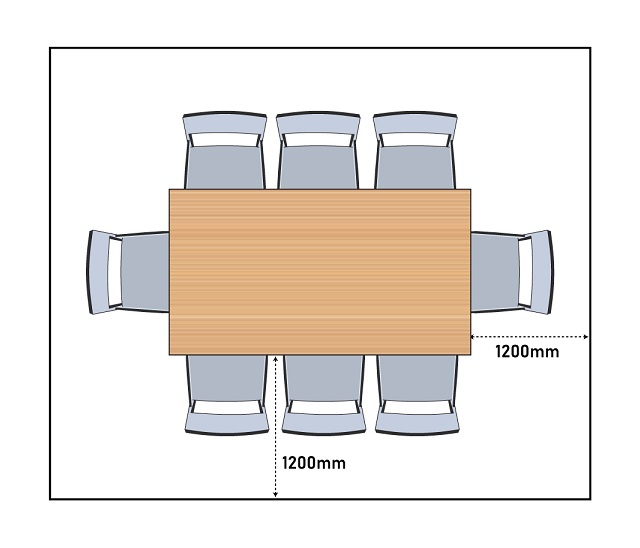
Other Variables To Consider:
- Allow space for your boardroom table when the room is an irregular shape, or if there are columns.
- Allow space for other furniture in the room such as sideboards and credenzas. If this is the case, allow space between the table and the closest obstruction.
- Importantly for small rooms, allow space for the door entrance, particularly if the door opens into the room.
- Tables don’t always need to be placed in the centre of each room, nor do you always need to allow the same amount of space all around the table.
NUMBER OF USERS PER TABLE SHAPE & SIZE GUIDE
If you prefer to start with the numbers of seats, or size and shape of table, to calculate how many chairs per boardroom table, then see the table below to guide your decision making. (NB – this should be taken as a guide only due to the variables listed above. For specific information call us on 01892 832880.)
|
Number Of Users
|
Rectangular / Boat /
D-End (mm)
|
Oval (mm)
|
Round (mm)
|
|
2-4
|
1200-1600 x 800-1200
|
NA
|
800-1000
|
|
4-6
|
1600-1800 x 800-1200
|
NA
|
800-1200
|
|
6-8
|
1800-2000 x 800-1200
|
1800-3000 x 800-1200
|
1000-1200
|
|
8-10
|
2000-2400 x 1200
|
1800-3000 x 800-1200
|
1600-1800
|
|
10-12
|
2400-3000 x 1200
|
3000-3600 x 1200
|
1800-2000
|
|
12-14
|
3000-3600 x 1200
|
3600-4200 x 1200
|
2000-2200
|
|
14-16
|
3600-4200 x 1200
|
4200-4800 x 1200
|
2200-2400
|
|
16-18
|
4200-4800 x 1200
|
4800-5400 x 1200
|
NA
|
|
18-20
|
4800-5400 x 1200
|
5400-6000 x 1200
|
NA
|
|
20-22
|
5400-6000 x 1200
|
6000-6600 x 1200
|
NA
|
|
22-24
|
6000-6600 x 1200
|
6600-7200 x 1200
|
NA
|
|
24-26
|
6600-7200 x 1200
|
7200-7800 x 1200
|
NA
|
|
26-28
|
7200-7800 x 1200
|
7800-8400 x 1200
|
NA
|
|
28-30
|
7800-8400 x 1200
|
8400-9000 x 1200
|
NA
|